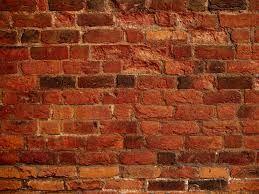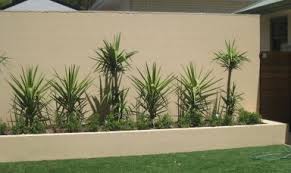How To Transform That Ugly Brick Wall
So you have a brick wall in your backyard, even worse it is around your back yard! One of the best things you can do to make it fresh is render it and paint it. Visit https://gardeninginfo-online.com for many other backyard ideas.
 The benefits of rendering external brickwork are many. It weather proofs your brickwork, making it longer lasting. If it is an old wall you have, it creates a fresh new look. And you can add any colours you like to the render, giving it the feel you want to achieve, just to name few of the benefits.
The benefits of rendering external brickwork are many. It weather proofs your brickwork, making it longer lasting. If it is an old wall you have, it creates a fresh new look. And you can add any colours you like to the render, giving it the feel you want to achieve, just to name few of the benefits.
Rendering is not as hard as you may believe it, however you have to ensure that you make it thick enough to cover the brick lines! If you can see the brick lines you have not laid your render on thick enough.
As with all things gardening the preparation will make a lot of difference in your finished product.
Remove any paint, plaster or any other loose material that may prevent good adhesion with a steel brush. Remove any brittle mortar in the joints of brick or block walls.
To protect the area from spilt render, cover paths or driveways with plastic sheets and mask any other exposed surfaces you wish to keep clean.
Fix the corner beading to the external corners of the surface to be rendered using an approved adhesive ensuring it is straight and plumb to provide a neat rendered finish. Apply a small amount of render to the inside of the beading, press it firmly to the corner and clean off the excess render that is squeezed out.
Thoroughly wet the surface to be rendered with a hose on a light spray setting or using a wet brush.
Tip: If you are rendering a new brick or block wall ensure that the mortar has been cured for at least 7 days to prevent hairline cracks from appearing in your rendered surface as the mortar dries.
Only mix one bag of render at a time.
Generally you will need to add 4 litres of clean water to a wheelbarrow and slowly pour one bag of render into the water – check for instructions on your bag render to ensure you have correct mixture. Mix thoroughly ensuring that the render is lump free and is stiff so that it will sit on a trowel. Allow the mix to stand for 5 minutes so that the polymer chemicals are activated and then quickly stir the mix again. The render needs to be applied within 30 minutes of final mixing and any spilt render should be discarded.
Tip: A heavy duty drill mixer is recommended for large rendering jobs providing a more consistent mix, where manual mixing in a bucket or wheelbarrow is suitable for smaller projects.
If you are rendering an existing brick or block wall, work the render into the mortar joints to provide a relatively flat surface, making it easier to apply a subsequent coat of render.
Start at the bottom of the surface to be rendered and apply the render with a steel trowel in an upward pushing motion. Ensure that you use long, even spreads upward and across the surface achieving a consistent and even thickness as you go. Fill any holes or divots with the render as you go. Do not overwork the surface as too much fine material will be brought to the surface increasing the likelihood of crazing (fine cracking).
Render can be applied in a thickness ranging from 2mm to 10mm in a single application. If subsequent coats of render are to be applied, the surface should be raked or scratched within 30 minutes of application to provide a rough surface for the next coat to adhere to. A minimum of 3 days must be left between coats to allow the render to develop maximum strength and prevent shrinkage cracks.
Allow the the final layer of render to become firm and finish off with a wooden trowel or polystyrene float to smooth and finish the surface to the desired texture.
To achieve a different texture a damp sponge can be used to provide a swirl or use a fine brush to provide a swept finish ensuring that not too much pressure is applied to the rendered surface.
Tip: If these techniques are not giving you the definition you want in your finish, wait until the render becomes firmer and finish the surface again.
To prevent cracking, keep the rendered surface moist by spraying it with a mist spray 24 hours after the wall is finished and repeat this for 5 days.
Tip: Where the newly rendered surface is in full sun, it is vital to cover the surface to prevent rapid moisture loss. Failure to do so could result in cracking. If using plastic sheeting to cover the render, prevent the plastic from touching the surface as contact may lead the rendered surface to discolour unevenly.
The rendered surfaced can be painted with water based paints after 14 days. Shades of browns and greys go very nicely with your garden as they are earthy colours.
And this is just the beginning as to what you can do to transform that brick wall!